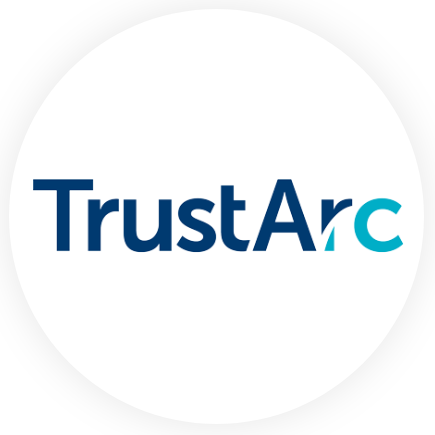While it may seem contradictory, being glued to a computer screen all day doesn't lead to peak productivity, especially in jobs that primarily involve screen use. In our screen-saturated world—where cell phones, laptops, gaming devices, and TVs are everywhere—it's challenging, but necessary, to avoid constant screen exposure, whether working in an office or from home.
Strategic screen breaks are essential for maintaining both a healthy and productive work environment. Integrating these pauses into your business routine not only supports your team's well-being but also boosts overall productivity and success. The brain isn't built for long, uninterrupted focus, and research by the National Institute for Occupational Safety and Health (NIOSH) shows that regular short breaks can reduce eye strain, physical discomfort and stress while sustaining performance levels.
Understanding the Impact of Screen Time
Prolonged screen time can negatively affect both you and your employees, leading to digital eye strain, mental fatigue and a shortened attention span, which can compromise work quality and progress. A 2021 study suggested that up to 90 percent of device users experience symptoms of digital eye strain, often exacerbated by multitasking across multiple screens. Taking breaks from screens can mitigate issues like blurred vision, dry eyes, and headaches associated with
How Screen Breaks Increase Productivity
It’s important to understand the ways screen breaks are beneficial including how they:
- Mental Fatigue: Continuous work, especially on screens, can lead to mental exhaustion, reducing the ability to concentrate and process information. Regular breaks refresh the mind, helping to maintain high cognitive performance throughout the workday and help employees also avoid decision fatigue.
- Creativity: Stepping away from a task can provide new perspectives and insights. Breaks give the brain a chance to subconsciously process problems, often leading to creative solutions upon returning to work.
- Physical Discomfort: Prolonged sitting and repetitive motion can cause musculoskeletal issues. Screen breaks that include stretching or walking can relieve tension and prevent discomfort, keeping individuals more physically ready to tackle their tasks.
- Mood and Morale: Continuous work without adequate rest can lead to stress and a negative mood, which can dampen team morale. Breaks can serve as a mental reset, reducing stress and improving overall mood, which is conducive to a more productive work environment.
- Time Management: Knowing there's a break coming up can motivate individuals to work more efficiently. This can lead to a more focused effort on tasks, with breaks serving as a reward and an incentive to manage time effectively.
- Burnout: Regular breaks can prevent the feeling of being overwhelmed, which is a common precursor to burnout. By taking time to recharge, employees can sustain their productivity levels over longer periods.
Implementing Screen Breaks in Your Small Business
Integrate screen breaks into your small business routine can be a game changer, here’s how:
- Your Team: Share the benefits of screen breaks with your employees. Understanding the 'why' behind the practice can encourage adherence.
- a Schedule: Encourage regular breaks, such as the 20-20-20 rule: every 20 minutes, look at something 20 feet away for at least 20 seconds. Alternatively, implement a 5-minute break every hour.
- Break Zones: Designate areas in the office where employees can relax without screens. This could be a lounge area with comfortable seating or a small café corner.
- Technology: Ironically, use technology to manage technology. Apps and reminders can help manage break schedules, ensuring everyone sticks to the plan.
- by Example: Business owners and managers should also take screen breaks. Leading by example is a powerful way to instill a culture of healthy work habits.
How NerdsToGo Can Help
While small businesses rely heavily on technology to operate efficiently and stay competitive, the constant use of screens can have a paradoxical effect, sometimes hindering productivity rather than enhancing it. This is where strategic screen breaks come into play and how a trusted Managed Services Provider (MSP) like NerdsToGo can help:
- IT Services: We'll handle your IT infrastructure, keeping systems updated and secure, so you can comfortably take breaks knowing your business is still running smoothly.
- Monitoring: Our proactive monitoring services mean that potential issues are identified and resolved before they become problems, allowing you and your team to disconnect without worry.
- Tools: We can recommend and implement tools that streamline your operations, making the time you spend on screens more productive and thus making breaks more feasible.
- and Support: Our experts can train your team on the best practices for digital wellness and provide support to ensure that your technology is always facilitating, not hindering, productivity.
At NerdsToGo, we're not just fixing IT issues; we're also advocates for sustainable work practices that boost productivity and regular breaks from screens can be a game-changer for your small business.

Computer Vision Syndrome - Computer Vision Syndrome is also known as Digital Eye Strain, which refers to a group of eye-and vision-related problems that result from prolonged use of computers, tablets, e-readers, smartphones and other digital screens. Symptoms of CVS may include: eye strain, headaches, blurred vision, dry eyes, neck and shoulder pain
These symptoms can be exacerbated by poor lighting, screen glare, improper viewing distances, uncorrected vision problems, or a combination of these factors.




.jpg)